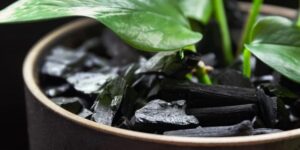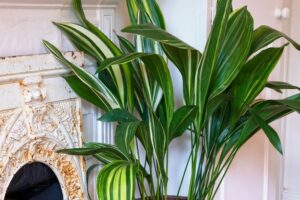
Introduction
The world of flowers is vast and varied, with each bloom offering its own unique beauty and charm. Among the plethora of floral species, there exists a fascinating array of flowers that start with the letter “E.” These flowers, with their diverse colors, shapes, and meanings, captivate the imagination and inspire admiration from flower enthusiasts around the globe. In this article, we’ll explore some of the most notable flowers beginning with “E,” delving into their descriptions, symbolism, cultivation, and care.
Echinacea
Description and Characteristics
Echinacea, commonly known as coneflowers, are herbaceous perennial plants prized for their vibrant blooms and medicinal properties. These flowers are characterized by their daisy-like appearance, with prominent raised centers and ray petals radiating outward. Echinacea species are native to North America and are often found in prairies, meadows, and open woodlands. Cultivated varieties come in a range of colors, including shades of pink, purple, and white.
Symbolism and Meanings
Echinacea holds cultural significance in various traditions, symbolizing strength, healing, and vitality. In the language of flowers, echinacea is associated with resilience and endurance, making it a popular choice for conveying messages of support and encouragement. In Native American folklore, echinacea was revered for its medicinal properties and was used to treat a variety of ailments, earning it the nickname “purple coneflower.”
Uses and Benefits
Beyond its ornamental value in gardens and landscapes, echinacea is renowned for its medicinal properties. The roots and aerial parts of echinacea plants contain compounds believed to boost the immune system and promote overall health and well-being. Echinacea supplements are commonly used to prevent and alleviate symptoms of the common cold and flu. In addition to its medicinal uses, echinacea is a favorite among pollinators such as bees and butterflies, making it a valuable addition to wildlife-friendly gardens.
Eustoma
Description and Characteristics
Eustoma, also known as lisianthus or prairie gentian, is a tender perennial flower prized for its exquisite beauty and delicate appearance. Native to warm regions of the southern United States, Mexico, and South America, eustoma blooms feature intricate layers of petals that resemble roses or peonies. Common colors include white, pink, purple, and blue, with some varieties exhibiting variegated or bicolor blooms.
Symbolism and Meanings
Eustoma holds symbolic significance in various cultures and traditions, representing gratitude, appreciation, and charisma. In floral arrangements, eustoma is often used to convey messages of admiration, elegance, and sophistication, making it a popular choice for weddings, anniversaries, and other special occasions. The delicate petals and graceful form of eustoma flowers evoke sentiments of romance and charm, adding a touch of timeless beauty to floral designs.
Cultivation and Care
Growing eustoma requires attention to specific cultivation and care techniques to ensure optimal blooming and plant health. Eustoma prefers well-draining soil with a slightly acidic pH and thrives in full sun or partial shade. Provide regular watering to keep the soil evenly moist but not waterlogged, as eustoma is sensitive to both drought and waterlogging. Deadheading spent blooms and providing occasional fertilization can promote continuous flowering throughout the growing season.
Epiphyllum
Description and Characteristics
Epiphyllum, commonly known as orchid cactus, is a genus of epiphytic cacti native to Central and South America. Unlike typical cacti, epiphyllum species are characterized by their flat, leaf-like stems and large, showy flowers. Epiphyllum blooms come in a range of colors, including white, pink, red, orange, and yellow, with some varieties featuring multiple colors or bioluminescent blooms that open at night.
Symbolism and Meanings
Epiphyllum holds spiritual significance in some cultures, symbolizing enlightenment, transformation, and the ephemeral nature of life. In Chinese folklore, epiphyllum is associated with good fortune and prosperity, and its blooms are often depicted in traditional art and literature. In the language of flowers, epiphyllum represents elegance and grace, making it a popular choice for floral arrangements and decorative displays.
Cultivation and Care
Cultivating epiphyllum requires providing suitable growing conditions that mimic its natural habitat in tropical forests. Pot epiphyllum in well-draining soil mix formulated for cacti and succulents, and place them in bright, indirect light to encourage healthy growth and flowering. Keep the soil evenly moist during the growing season, reducing watering frequency during the winter months when growth slows. Provide occasional feeding with a balanced liquid fertilizer to support blooming and overall plant health.
Eryngium
Description and Characteristics
Eryngium, commonly known as sea holly or eryngo, is a genus of flowering plants in the Apiaceae family native to coastal regions of Europe, Asia, and the Americas. These hardy perennial plants are characterized by their distinctive spiky foliage and cone-shaped flower heads surrounded by spiky bracts. Eryngium blooms come in various shades of blue, purple, and green, with some species featuring metallic or iridescent hues.
Symbolism and Meanings
Eryngium has historical significance in herbal medicine and folklore, believed to possess mystical and protective properties. In medieval Europe, eryngium was associated with warding off evil spirits and protecting against curses and hexes. In modern floral design, eryngium is prized for its unique texture and color, adding interest and depth to arrangements. In the language of flowers, eryngium symbolizes admiration, strength, and resilience, making it a meaningful choice for gifts and bouquets.
Cultivation and Care
Growing eryngium requires providing well-drained soil and full sun to partial shade conditions similar to its natural habitat along coastal areas. Plant eryngium in soil amended with organic matter to improve drainage and fertility, and water regularly during the growing season to keep the soil evenly moist. Deadhead spent blooms to encourage continuous flowering and prune back foliage in the fall to promote new growth in the spring. With proper care and maintenance, eryngium plants can thrive and provide years of beauty in garden landscapes.
Conclusion
Flowers beginning with the letter “E” offer a rich tapestry of colors, shapes, and meanings that enrich the world of floral design and gardening. From the iconic echinacea to the delicate eustoma, the majestic epiphyllum, and the rugged eryngium, these flowers captivate the imagination and inspire admiration with their beauty and symbolism. By exploring the descriptions, symbolism, cultivation, and care of these remarkable flowers, enthusiasts can gain a deeper appreciation for the diverse array of blooms that nature has to offer. Whether grown in gardens, used in floral arrangements, or admired in their natural habitats, flowers beginning with “E” continue to fascinate and delight flower lovers around the world.




